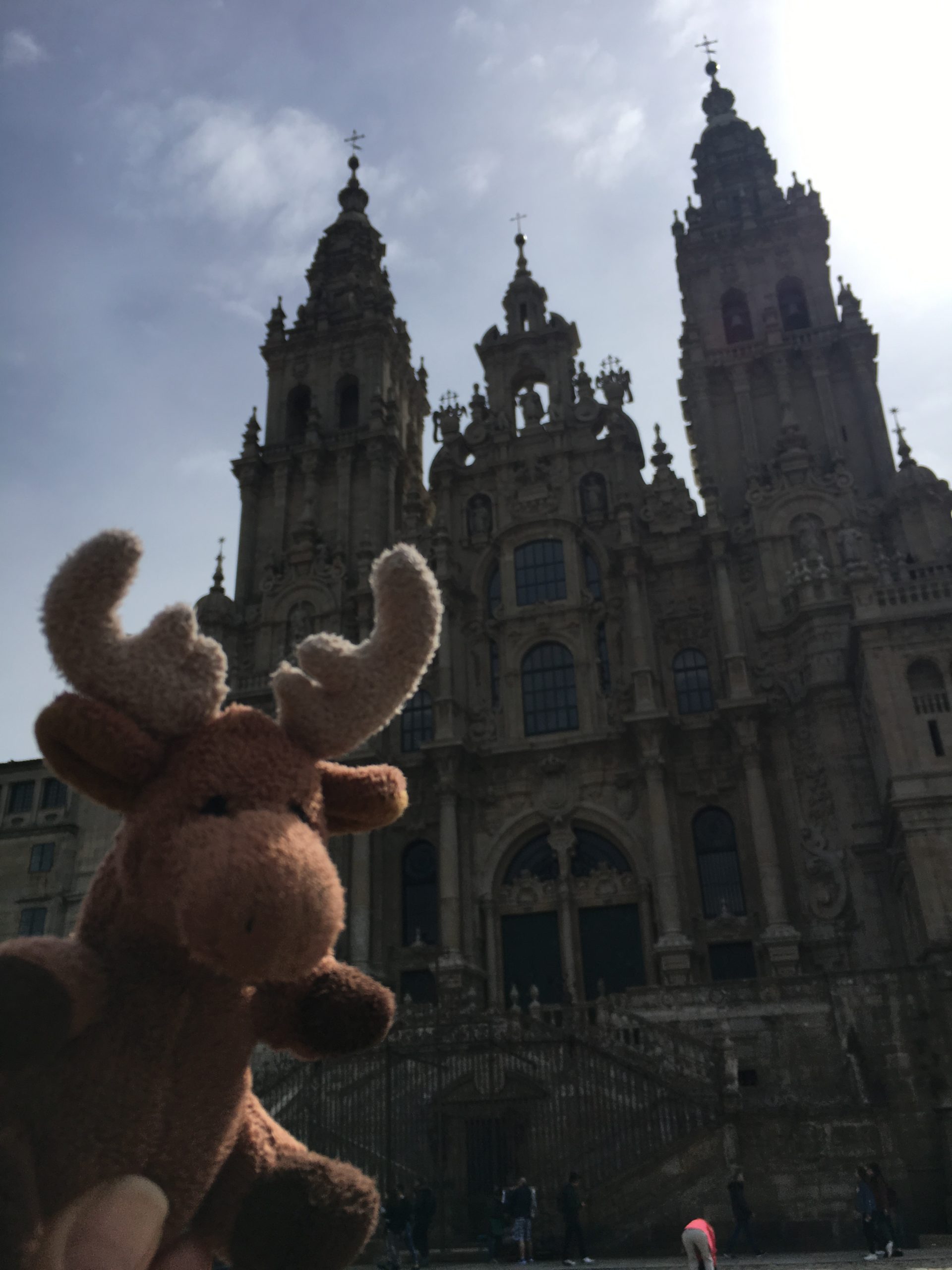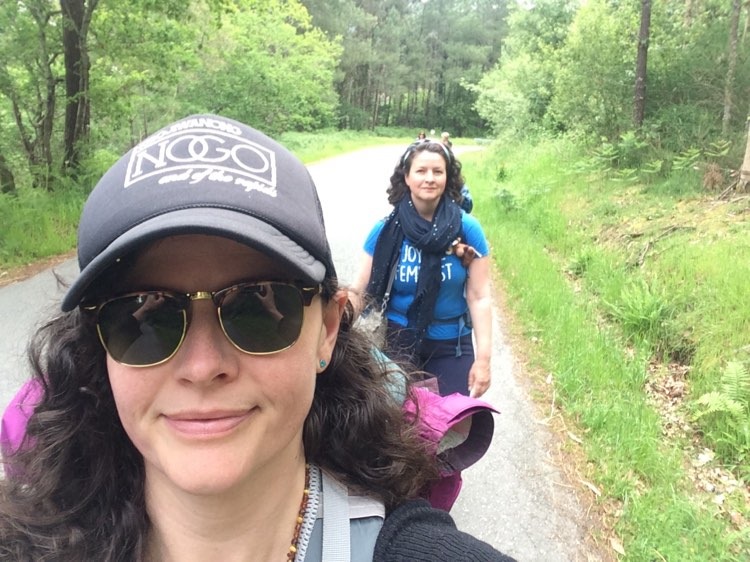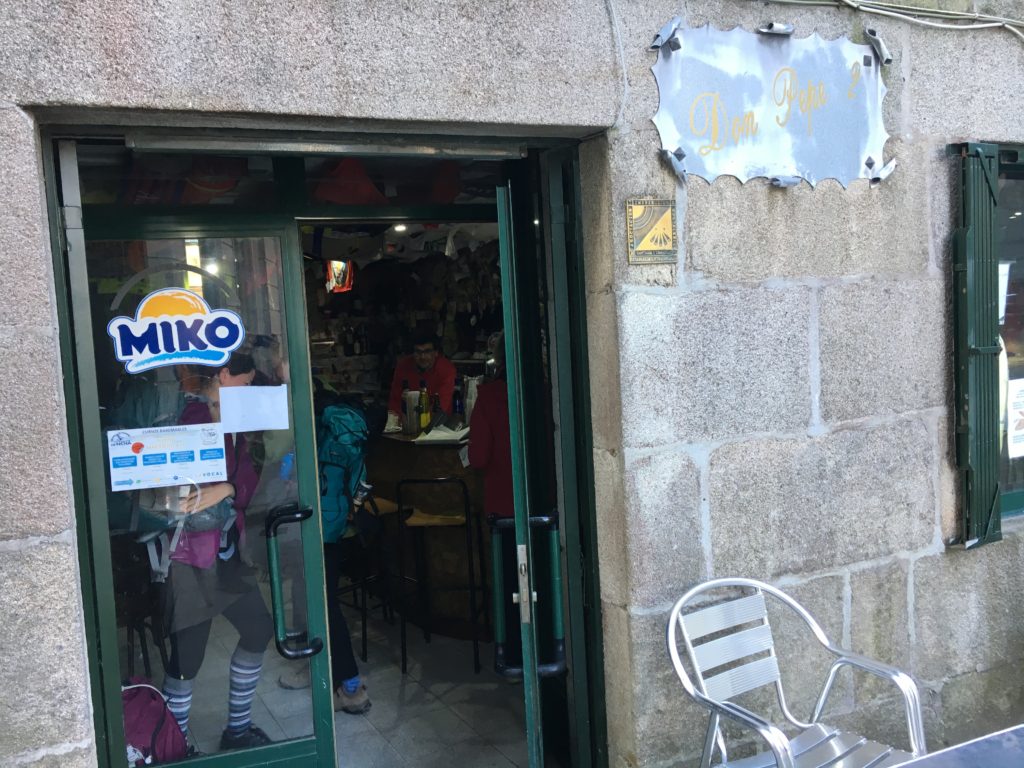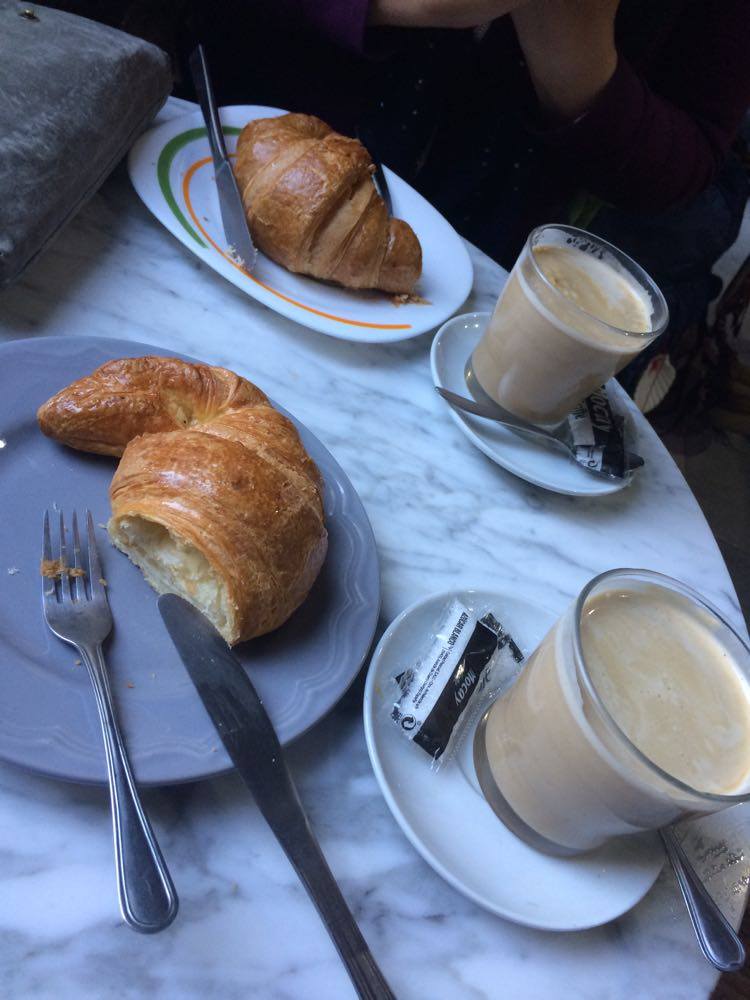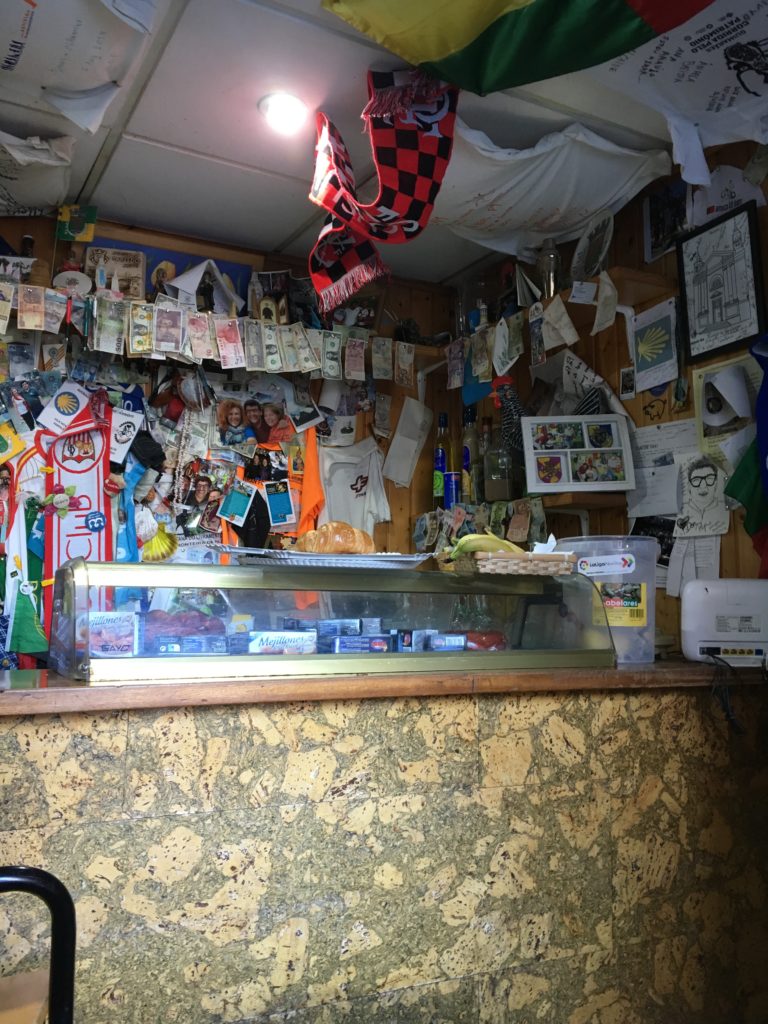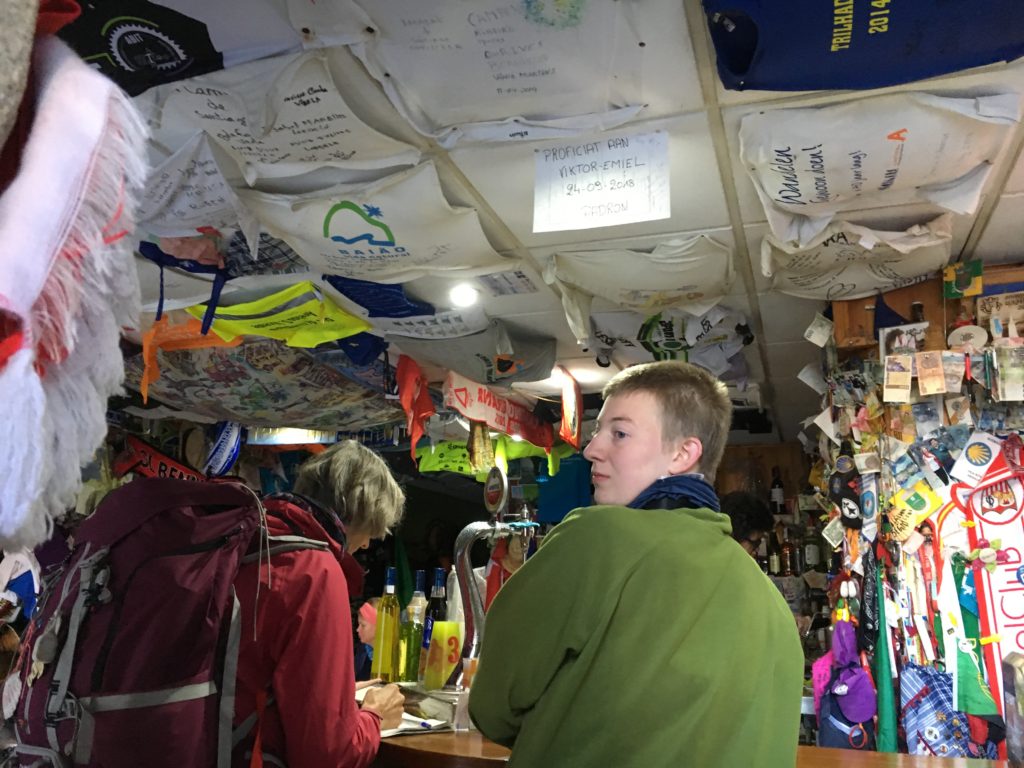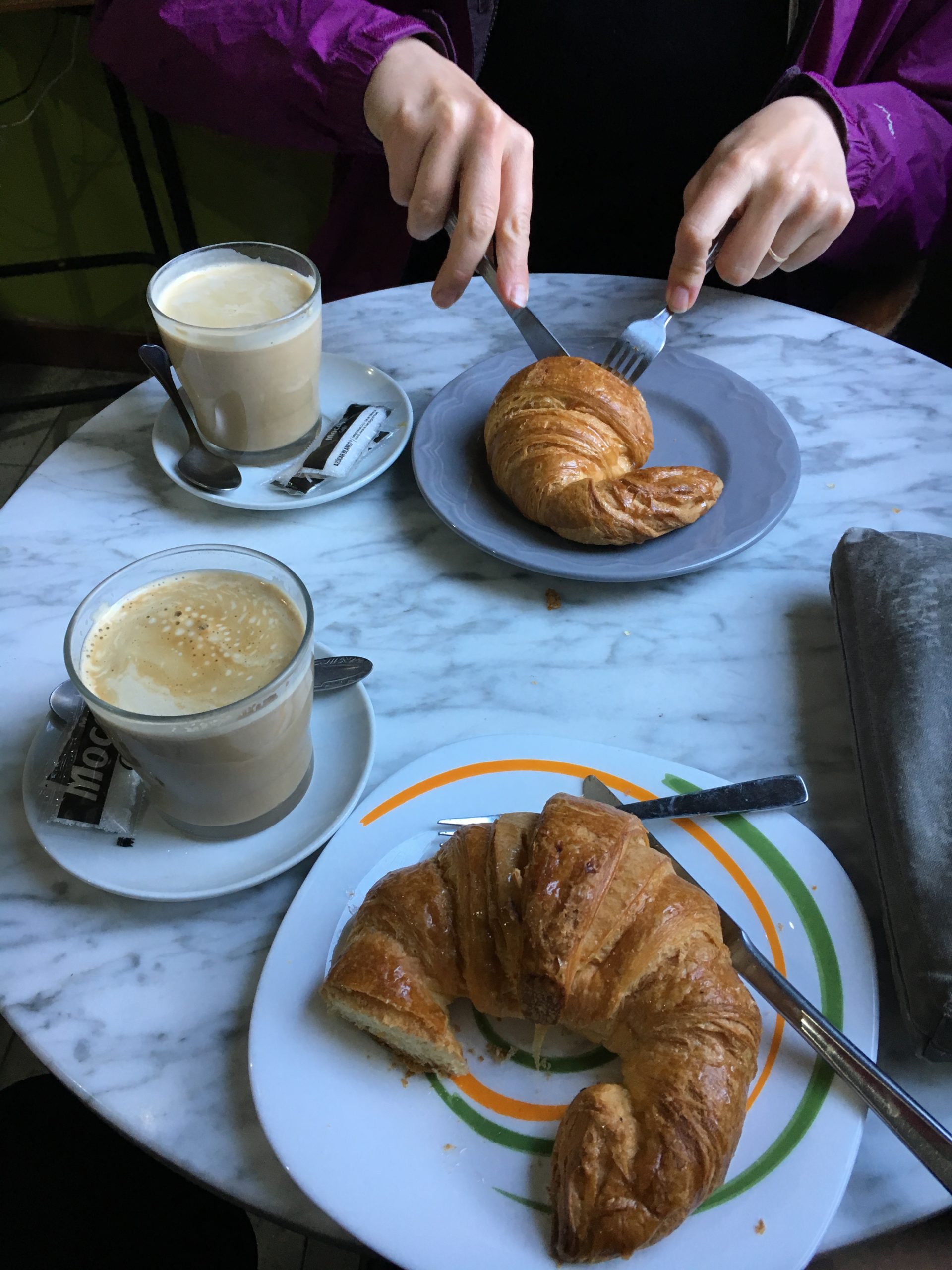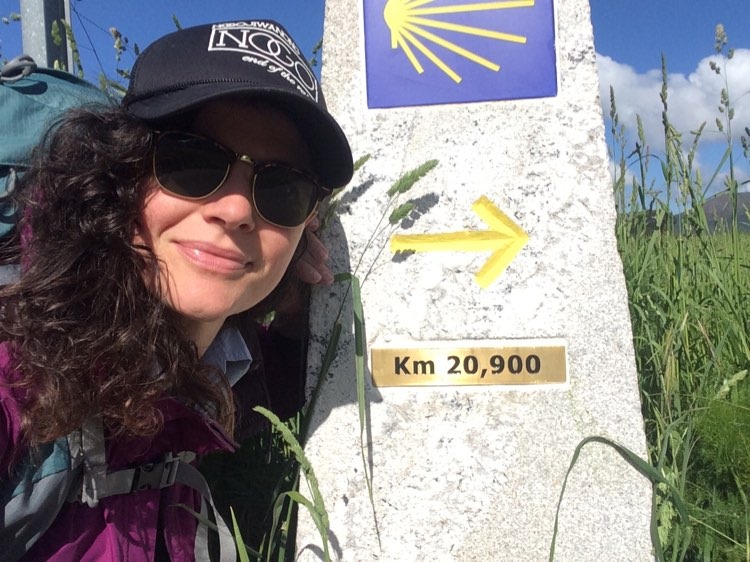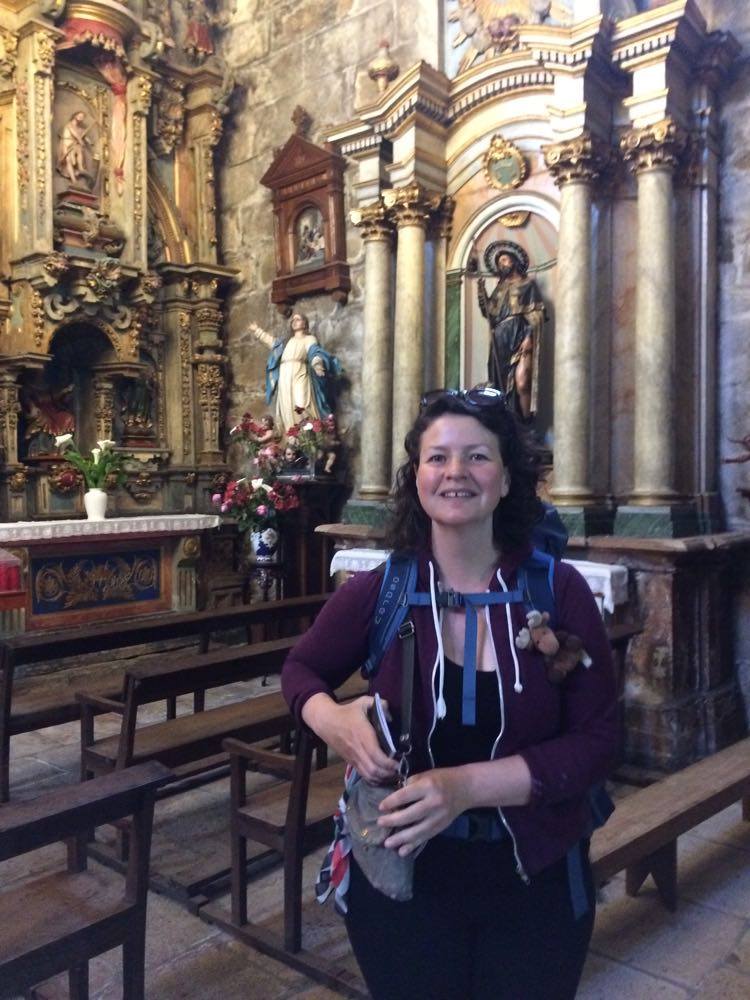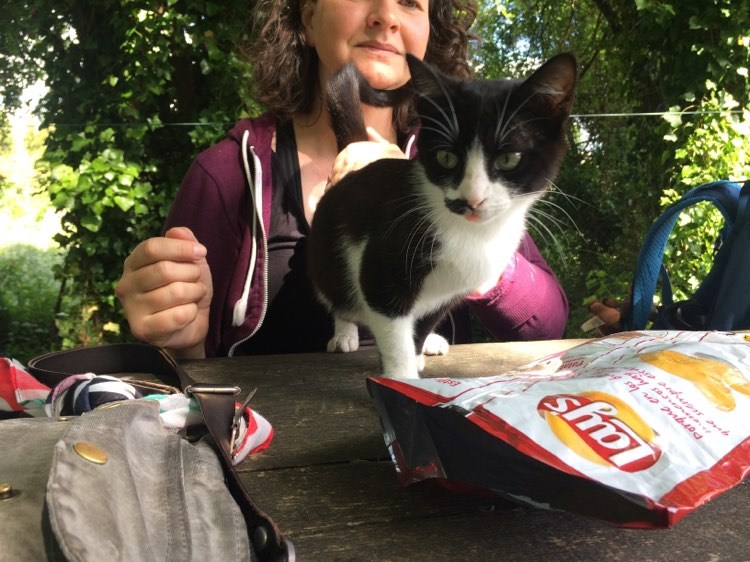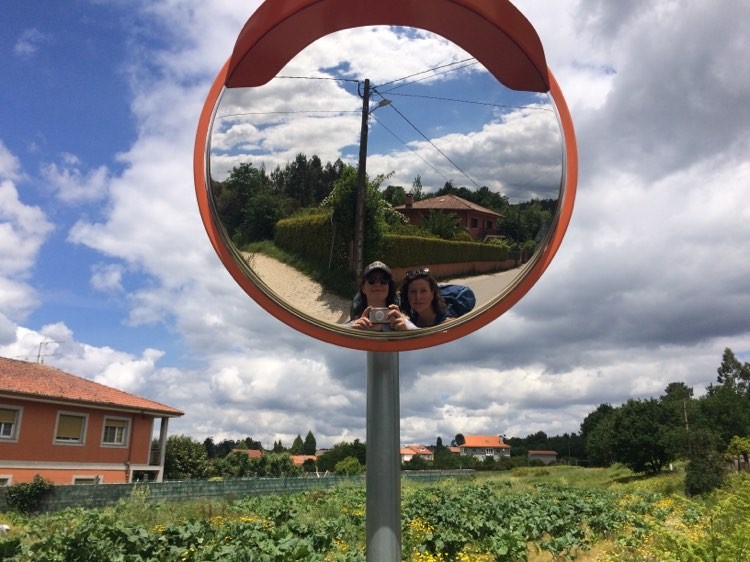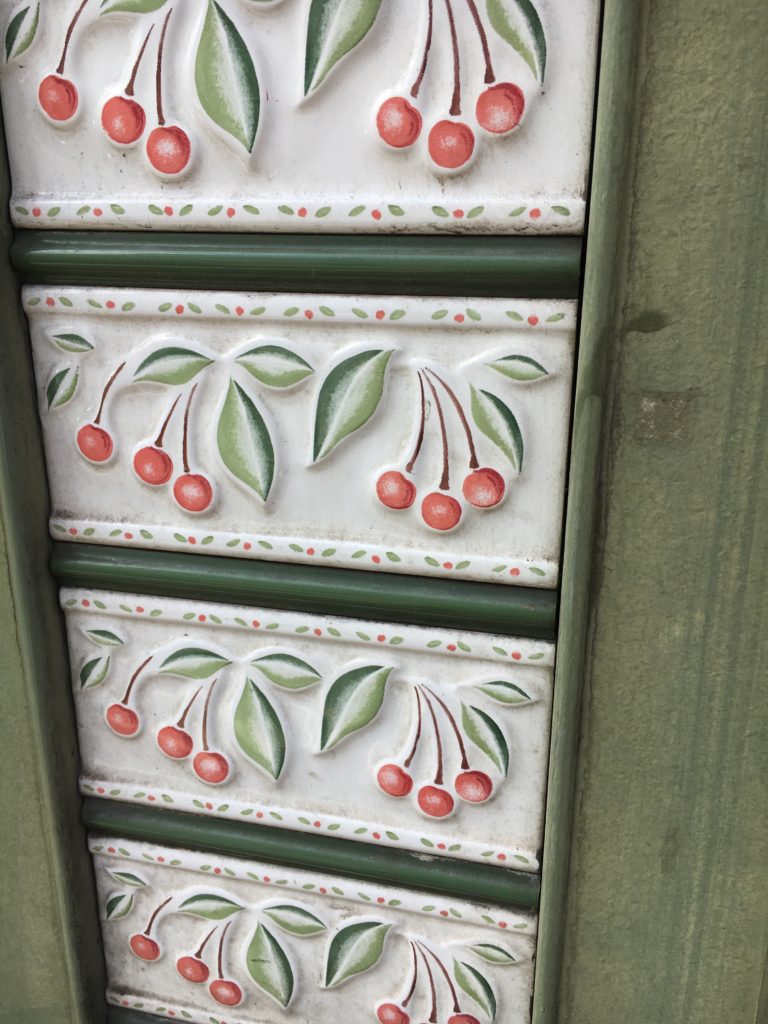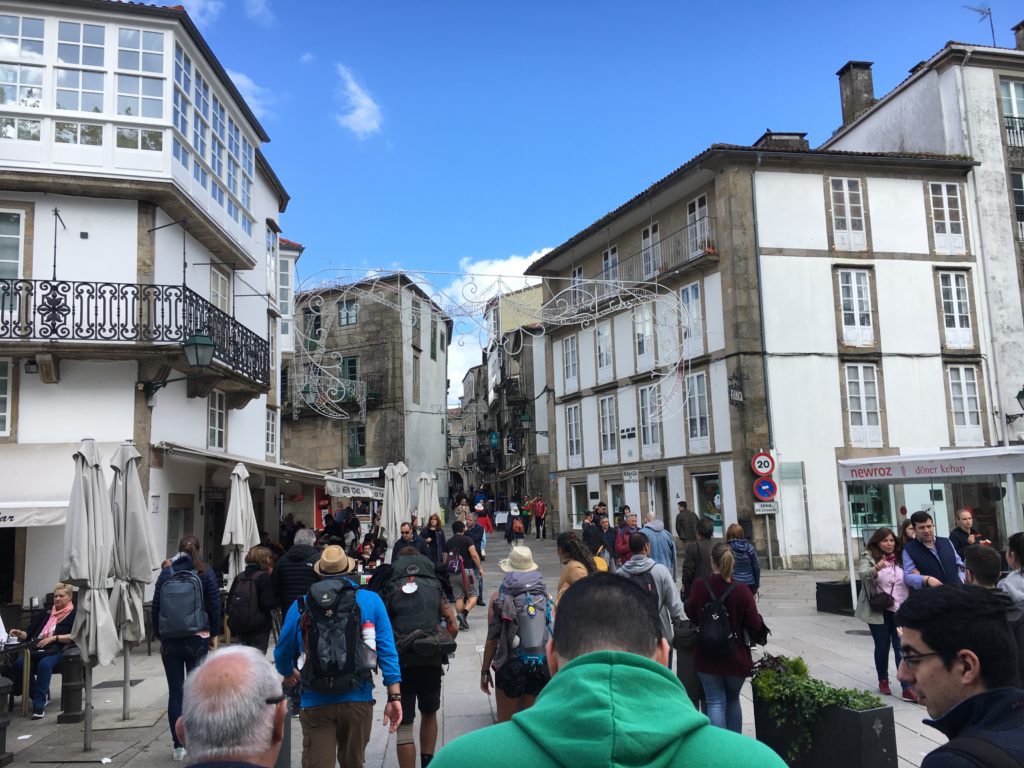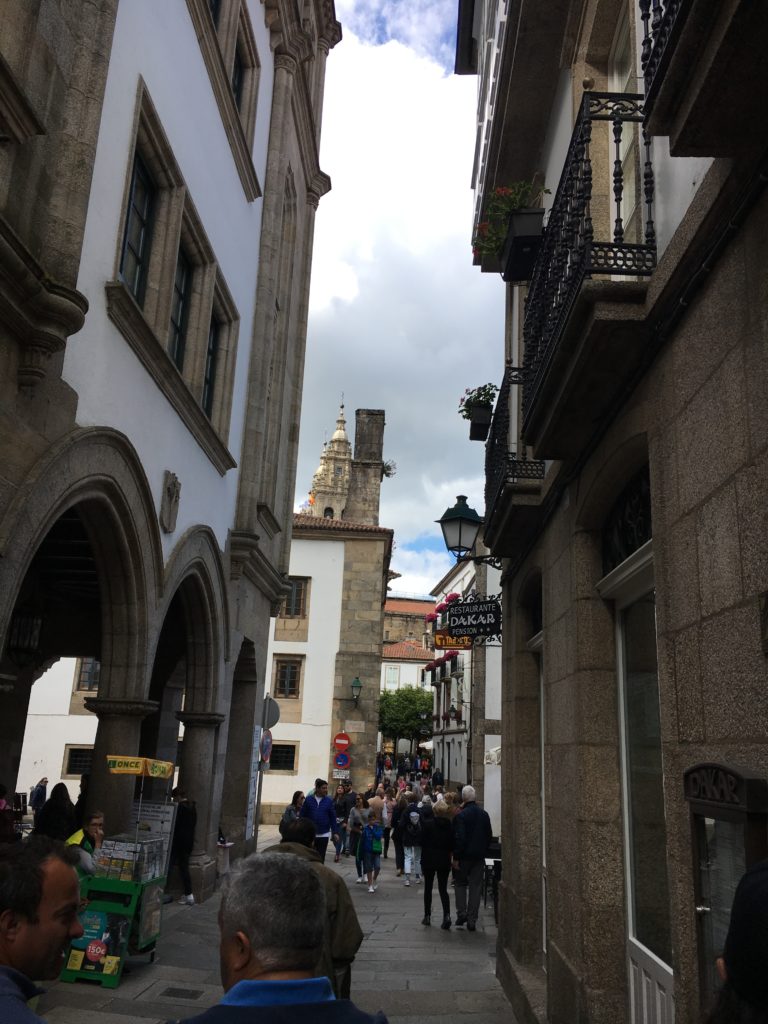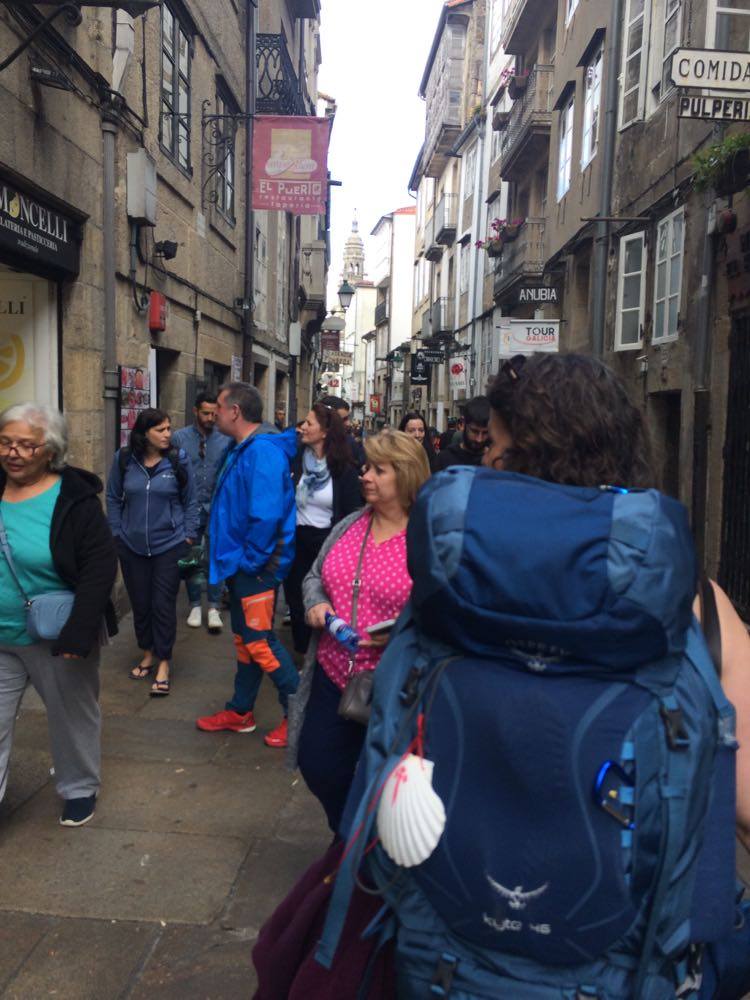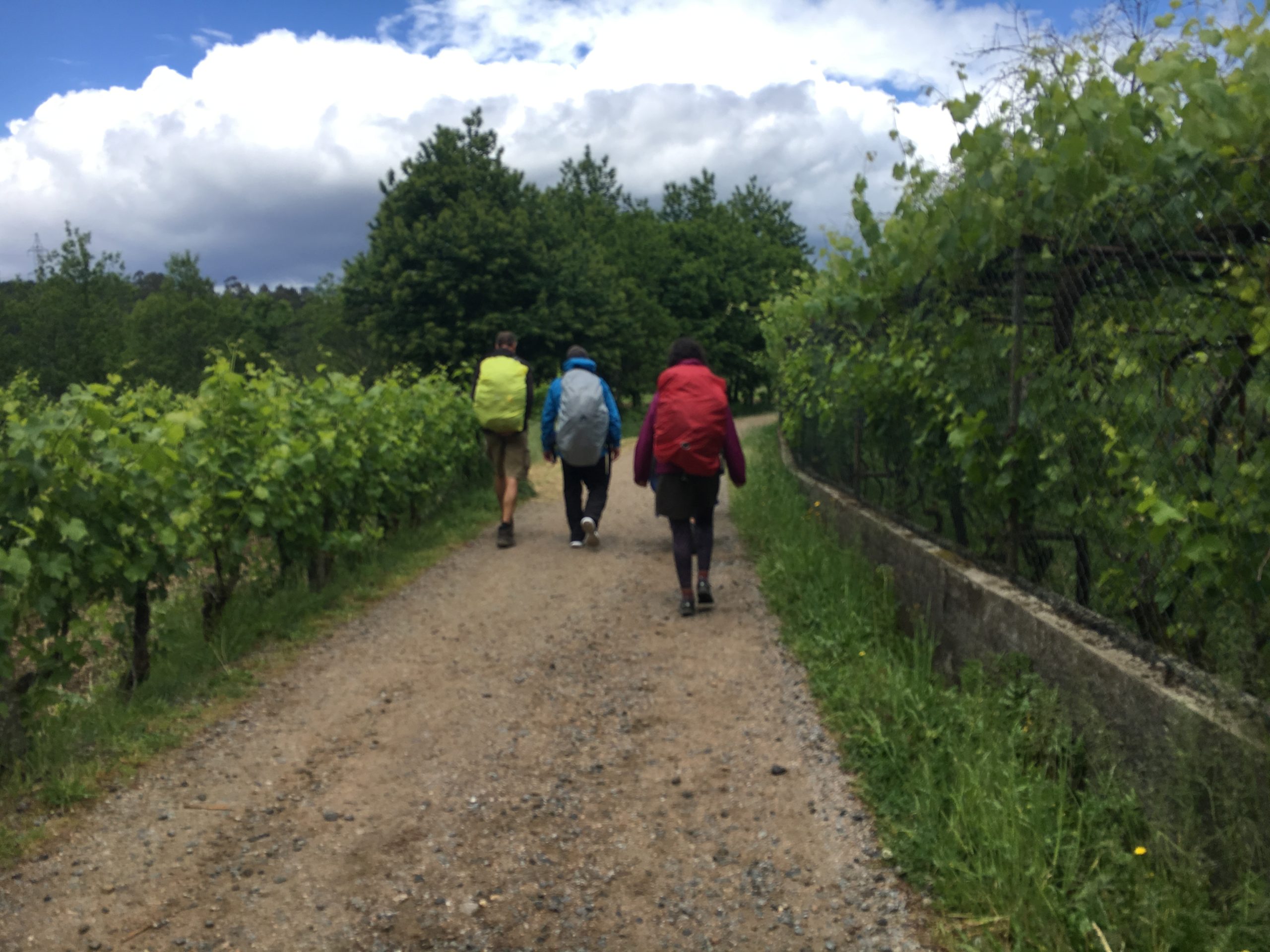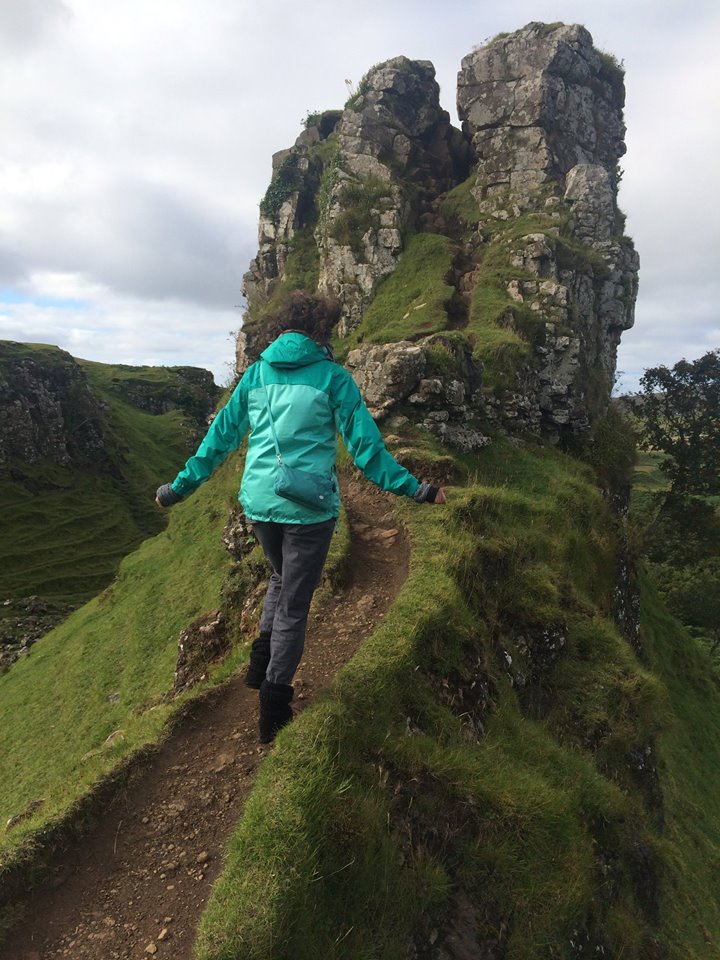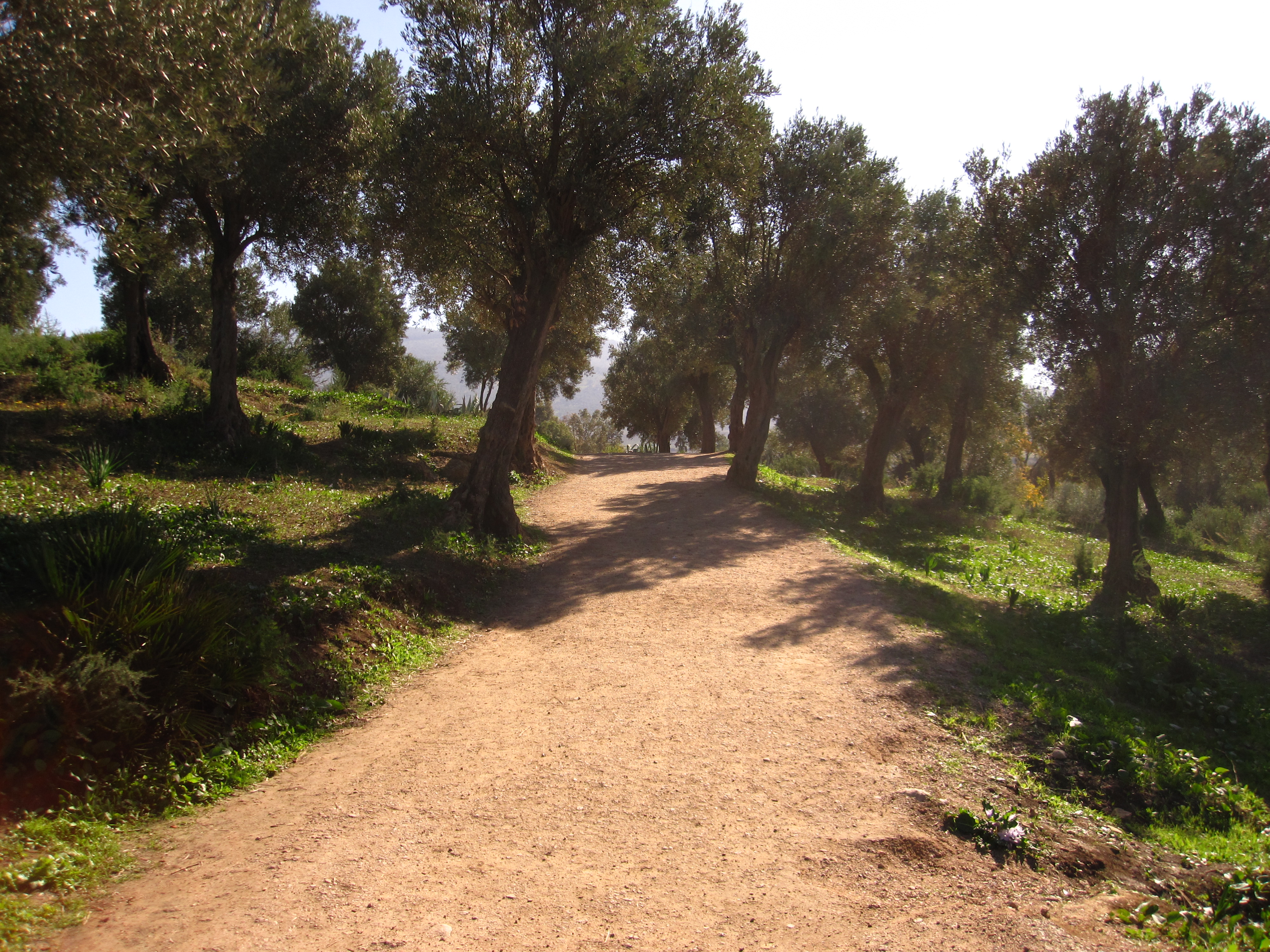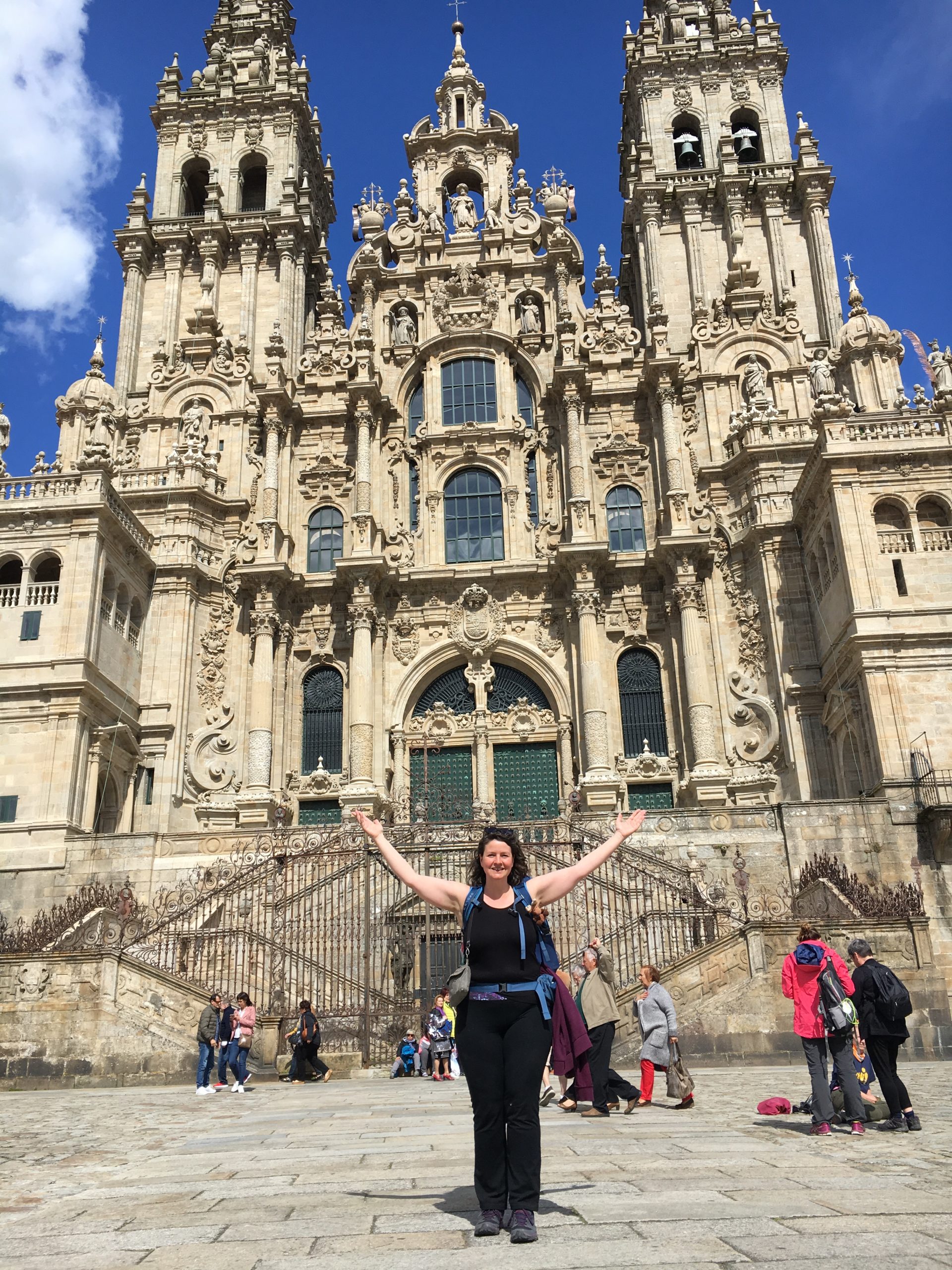
Camino Day 12 – Padron to Santiago
8.5 hours, 30.4 km walked
(Walking times includes stop for meals and breaks)
The morning – our last day formally on the Camino, with Santiago a long day’s walk away – dawned bright and clear and a little cool. We’d lingered a the albergue, leaving around 8:30am, and headed across the square to Don Pepe II Cafe, a place that caters to pilgrims, opening at 5am every day. It’s – let’s say idiosyncratic, with pilgrim memorabilia covering the ceiling and walls and a distinctly musty smell. You will not escape this cafe without getting a hug and kiss from the owner; lots of people love that, but forewarned is forearmed.
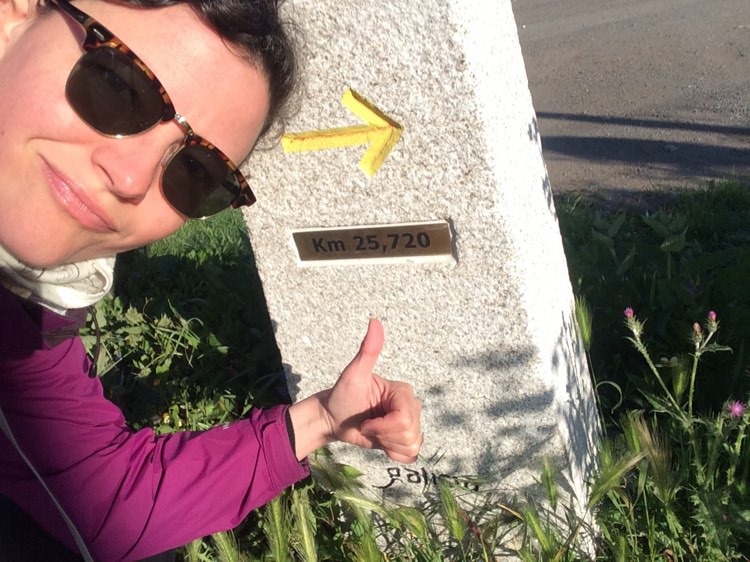
With 25km left to go to complete our pilgrimage and blessed with clear, lovely weather, it felt a bit daunting but doable. So at 9am, we set out from lovely Padron, and got back on the road.
We passed through Flavia, and the churchyard at Igrexa Santa Maria Iria Flavia was too interesting to pass by, though we’d hardly been walking 15 minutes at this point. It’s a Medieval church that dates back to at least 9967 CE, and apart from the more modern graveyard there are these ancient – and empty – sarcophagi.
Along the way, you get to see plenty of interesting architectural choices, including using scallop shells as siding for houses, which seems like a durable and environmentally-friendly choice, as well as being very on-brand.
Sammi was feeling good – probably because we’d had a couple of nights of proper sleep – and had a dance break.
Every Camino waymarker felt significant, as we watched the numbers tick down, walking through villages where every yard has a beautiful vegetable garden, through towns with neat flourishes.
I mentioned yesterday that you’re welcome to go into churches, and that sometimes if you’re lucky a nice priest will show you around, and that was exactly what happened here at Igrexa da Escravitude. We arrived around 11am, and the building itself looked so cool that I couldn’t resist. So we ducked into the cool interior to look around – and I’m so glad we did. It’s a really beautiful church, with incredible sculptures and artwork.
The priest invited us and the couple of other pilgrims who were there to come back to the sacristy (kind of the dressing room/office/backstage of a Catholic church), where there were these cool painted panels, mostly from the 19th century, recording miracles that had happened to local people, and giving thanks for their rescue from illness and storms. They’re done in a much less elaborate style than most church art, and tell very personal stories – sort of on the edge of outsider art. I know that this style is often described as ‘naive’ or ‘folk art,’ but I disagree with both terms. This kind of very personal story-telling through art is some of my favourite, as it’s art for sort-of average people. If we hadn’t happened to meet the priest, we’d never have seen tham.
We were given a chance to look around while the priest stamped everyone’s credencials with the church’s sello – quite a few churches have them, so it’s worth keeping your eyes peeled for ‘stamp your own credencial’ stations, or asking around. If you’re a stamp-hound, you’ll really miss out if you don’t go to the churches.
Shortly after our visit to the church, around 11:15am, we got the the waymarker that told us we had less than 20 km to go; when you’re on foot, and nearing the end, and tired and aching, these feel really significant. We may have been dawdling a little bit at this point; the day was beautiful, there were lots of neat things to see, and we had a lovely place booked for the evening in Santiago. And starting late and moving slow meant we were behind the hordes of pilgrims; we’d see people, but nothing like the weird stress and pressure of being in the packs.
Very occasionally there are rest stops with picnic tables, where pilgrims can sit down and eat whatever food they have in their packs. Around noon at one of these, we met a very friendly tuxedo cat, who was super-excited to eat potato chips or whatever scraps of last night’s Galician cheese plate we were willing to feed her. We loved her, as we were fully missing our kitties back home.
Back on the road, we had whole stretches of the path to ourselves.
Emerging up out of the forest towards a main road about 45 minutes later, we saw a sign that read “Smoothies – Guacamole – Hummus – All Homemade – 100% natural – coffee – fruit – good music & lots of love!” And since both of us had been craving something along these lines, we decided to stop. Mamba Jamba calls itself “That place with the avocado toast,” and Sammi’s looked so good that I ended up ordering one too. By this point, the day was quite hot, and it was lovely to sit down on some old wooden pallets, with a packing case as a table, and sip cold beer and cider while munching delicious guacamole. The couple who run the place are really lovely, and it was a pleasant oasis where we may have stayed a little too long. And because the space has limited potable water, we couldn’t refill our bottles here, which had negative consequences later.
Here we passed one of the oldest wayside crosses in Galicia, the cruceiro do Francos, and along an ancient bit of the Camino, through a shady village square filled with old oak trees.
At 2:30pm, we dipped below the 10km mark, a cause for celebration, but also of concern – we still had about 2-3 hours of walking ahead of us, the sun was hot, and by this time on most days we’d reached our destination. We were tired, hot, and incredibly thirsty. At this point, the route was mostly on sidewalks, through the edges of towns, where there were no stores, no water fountains, and no shade.
As we walked into O Milladoiro, after and hour and a half of walking through shadeless suburban wasteland, I desperately needed a bathroom, and Sammi was starting to get heatstroke. Because it was a Sunday, the mall was closed, as were most other stores, so we headed down to La trastienda del 7 to use their bathrooms, grab a coffee, and hopefully get our canteens refilled. The place was busy, full of pilgrims on a leisurely last day enjoying a beer and a meal, and it looked really nice. But we were in bad shape – Sammi felt sick, I was dehydrated and exhausted, and we were both feeling pretty low.
This was the worst part of our entire Camino, for me – we’d had ups and downs along the way, but in this last bit of walking, I’d been looking up local bus schedules to get us to Santiago. From O Milladoiro, it’s a 15-minute drive to Santiago, which is super-tempting when you’re worried that your sister might pass out on the trail.
But after a coffee, some water, and a quick stop at a falafel place where we were able to buy some large bottles of water, we continued on.
At O Milladoiro, you have a choice: there’s the newer way, and the older way. The older way, no longer well signposted, is a bit more pleasant and shady, and shorter. I’m not sure why the route was changed – presumably to bring pilgrims to local shops and cafes, rather than through countryside (which I don’t begrudge, but we were also in no mood to walk an extra step). Here we paused; we knew that we wanted to take the shorter route – we’d decided that before the day began – but the waymarkers mentioned in our guidebook had been changed, and only pointed to the newer, longer route.
As we consulted the guidebook and the maps to try to figure out where to go, another pilgrim approached us. “Are you trying to find the shorter route?” she asked, and when we said yes, we all put our heads together to figure it out as other pilgrims streamed past along the waymarked route. After a few minutes, we decided to take our chances, and set our feet on the less-travelled path.
After a few minutes, and feeling like we had made the right choice, we got talking; she was from San Francisco, had made the pilgrimage alone from Lisbon (a journey of at least a month), and her name was Cassie.
Sammi and I both exclaimed at that point – our sister is named Cassie, and it felt like a good sign. I often hear people say ‘the Camino provides,’ and in this case, it really did. In our crappiest hour, when we felt like we couldn’t go one, the Camino sent us a Cassie to encourage us.
For most of the afternoon, my focus was on putting one tired foot in front of the other, and for several hours I hardly took any pictures at all. The path was shady and deserted, but we were guided by painted yellow arrows and the old-style waymarkers. Cassie was a good walking companion, and the next hour and a half passed fairly quickly.
And then, quite suddenly, you’re in Santiago, joining the river of pilgrims heading towards the great Cathedral of St. James.
It was very different than the other cities we’d visited along the way; the path we were walking was lined with souvenir shops, and thronged with tourists and street performers. In most places we’d visited, pilgrims were a frequent sight, but not the bulk of the people; in Santiago, at least in this part of the city, pilgrims – either just arriving, like us, or shopping and exploring – made up the bulk of the people in the street. Even though we weren’t there in the high season, the streets have the feel of a carnival.
At 5:30pm we finally made it! We took our pictures in front of the cathedral, said our goodbyes to Cassie, and went in search of our hotel.
A quick note here: reaching the cathedral is absolutely a bit anticlimactic, especially when you arrive exhausted and sun-struck. You’re not allowed into the cathedral with your pack (which I think is a very sound policy), so you can’t go straight in and hug the icon of St. James and really finish it off. I was excited – absolutely – to have made it – this is something I’ve been dreaming about doing for 20 years, and the image of the cathedral is as familiar to me as any iconic building. But Sammi was totally wiped out, and we both wanted to rest.
For our night in Santiago de Compostela, we’d gotten a great deal on a splurge room at O Xardin de Julia, a lovely old mansion that’s been converted into a boutique hotel, run by another hotel nearby. It’s modern and slightly upscale, which feels like the complete lap of luxury after municipal albergues.
After a brief rest, we headed out again to the Pilgrim’s Reception office, not far from the cathedral and our hotel, and joined the short line of pilgrims waiting to show their credencial and receive their Compostela, the official document that says you’ve completed the pilgrimage for religious or spiritual reasons. When you go into the office, they take your credencial, check to ensure that you have the sellos to prove that you walked the last 100 km, and then issue you the Compostela, complete with your name, Latinized if your name doesn’t already have a Latin ending – Samantha became Samantham, while Candace works in Latin (despite being an Ethiopian name). Waiting in line and getting our Compostela only took about 20 minutes.
We took a quick stop at the pilgrims’ chapel which is part of the office, with it’s lovely, calm interior and the graceful, kind-looking statues of St. James and the Virgin Mary as a peregrina. Something about the space brought me to tears.
We found a vegetarian restaurant, Hervor e Fervor, a restaurant with good veggie burgers, a pretty good hummus, and a menu item featuring “tepid tuna belly” (I love translation errors, because it shows you the ways that other languages differ from English).
On the way back to our hotel, we strolled through the plaza in front of the cathedral, and caught a little of these great street musicians, playing to a big crowd of pilgrims from all over the world. It was fun, but we were exhausted, so we headed back to the hotel to sleep, planning to visit the Cathedral and formally finish off our pilgrimage the next day.
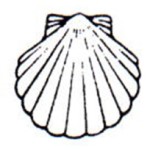
Follow our Caminho Portugues adventure!
Landing Day in Porto
Day 1 – Porto to Vila Cha
Day 2 – Vila Cha to Rates
Day 3 – Rates to Barcelos
Day 4 – Barcelos to Ponte de Lima
Day 5 – Ponte de Lima to Rubiaes
Day 6 – Rubiaes to Tui
Day 7 – Tui to Porriño
Day 8 – Porrino to Redondela
Day 9 – Redondela to Pontevedra
Day 10 – Pontevedra to Caldas des Reies
Day 11 – Caldas des Reies to Padrón
Day 12 – Padron to Santiago de Compostela
Finishing the Camino in Santiago (you are here)
At the same time as writing this travelogue, I’m writing an article with practical advice for people planning on taking the walk themselves, when we can travel again, and when I post it, I’ll link it here.
